The town of Phoenix was settled in 1867 and incorporated on Feb. 25, 1881, as the City of Phoenix. At the heart of the city, Downtown Phoenix has experienced an unimaginable evolution. In honor of our 140th anniversary, we are taking a look back to see how far we’ve come.
DEVELOPMENT | ENTERTAINMENT | INNOVATION & TECHNOLOGY | ARTS & CULTURE | HOTEL & LODGING | EDUCATION | RESTAURANTS & DINING | RESIDENTIAL | PARKS & OUTDOOR SPACE | OFFICE & WORK | TRANSPORTATION
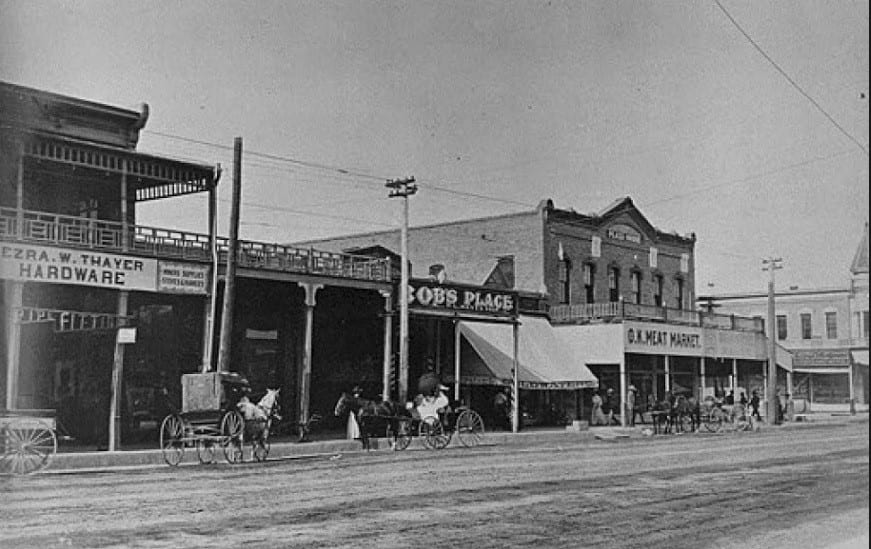
Then: Historic Washington Street

Now: CityScape Phoenix & Block 23
In Phoenix, the oldest standing building is the Fry Building, developed in 1885 and located on the northwest corner of Second and Washington streets. While many people wouldn’t think twice about seeing it, the signature orange building first housed a drug store and a meat market, and held the Plaza Boardinghouse on the upper level.
Today, the Fry Building is owned by a well-known Phoenician – Phoenix Suns legend Dan Majerle. Dan transformed the local landmark into his namesake restaurant, Majerle’s Sports Grill, which has served as a downtown hotspot for more than 25 years.
Looking at the evolution of Downtown, structures like Block 23 and CityScape Phoenix have redefined our skyline. RED Development has spent 15 years helping shape Downtown Phoenix’s retail and nightlife, as well as attract major employers, including United HealthCare and Alliance Bank of Arizona. They’ve also given us our first supermarket in the downtown core in several decades.
In Q1 2020, Phoenix tripled their crane count and have continued on the upward trajectory, while major cities like Seattle, San Francisco, Chicago and New York have seen their numbers plunge, according to the RLB Crane Index®.
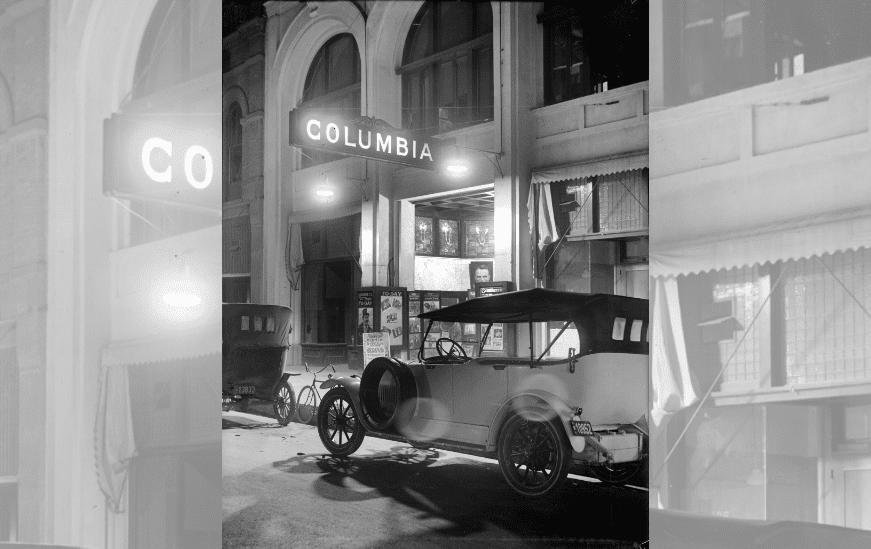
Then: Columbia Theatre
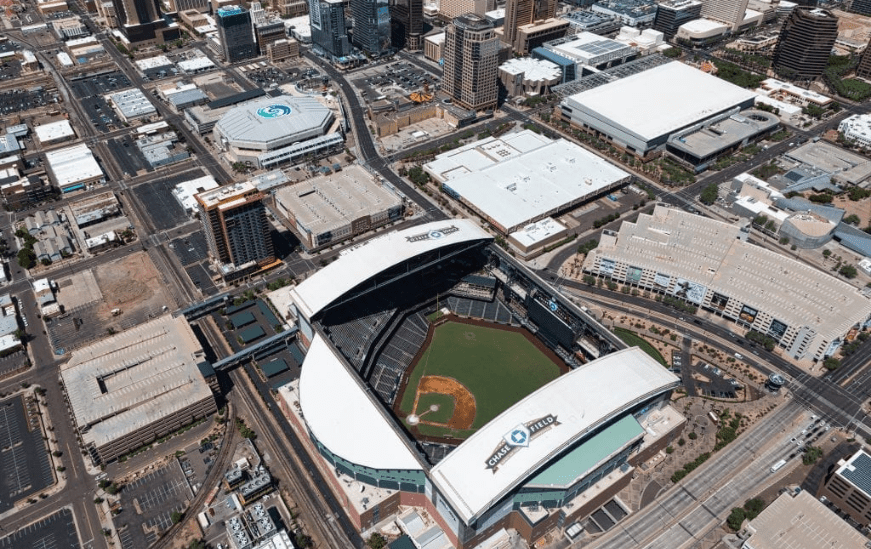
Now: Chase Field
Downtown Phoenix has seen an explosion of entertainment options since its humble beginnings hosting traveling musicians, films, speakers and live theatre with the grand opening of Columbia Theatre in 1914. Our downtown nightlife started with the development of the Phoenix Suns Arena and Chase Field, which have not only been home to sporting events, but also a major draw for concerts and other large-scale events.
With visitors arriving earlier and staying later, Downtown Phoenix has become a live music destination, thanks to an expanded list of venues including Crescent Ballroom, Valley Bar, The Van Buren, Symphony Hall, Orpheum Theatre, and the Arizona Federal Theater.
Visitors have been flocking by the millions to visit these venues, but also other nightlife options at Collier Center, Luhrs City Center, Block 23 and CityScape. With live music 365 days a year, Phoenix might not be the official city that never sleeps, but it’s definitely close.
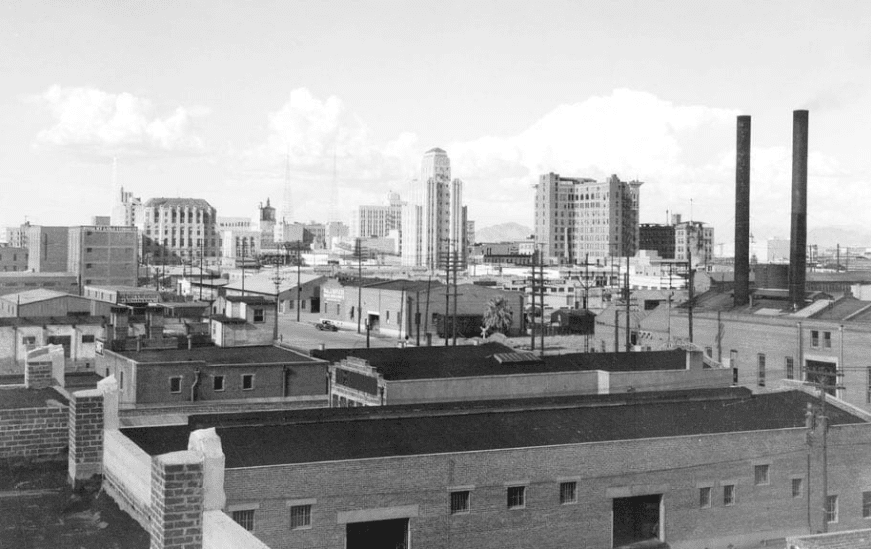
Then: Historic Warehouse District
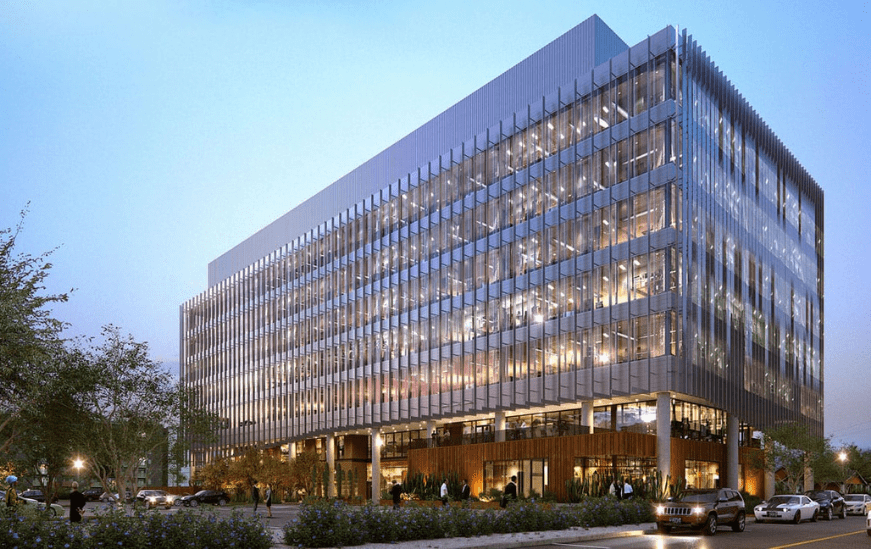
Now: Phoenix Biomedical Campus
For a city whose innovation stretched as far as being a depot for produce and a Coors distribution center in the historic Warehouse District, Downtown Phoenix has sure come a long way! It’s now a major tech and innovation hub, becoming the envy of many major metropolitan centers. Including the evolution of the Warehouse District with Coplex, a Corporate Startup Studio, and the Galvanize campus, a dynamic learning community for technology, housing more than 100 tech, innovation and creative companies.
We are also proudly home to the Phoenix Biomedical Campus (PBC), which is the single-largest use of land in our core. The City made the strategic choice to reimagine the 30-acre location, which is now home to Translational Genomics Research Institute (TGen), UArizona Medical School and, opening on the northern edge of the campus in 2021, the PBC Innovation Center by Wexford Science and Technology.
It is extremely rare to have an innovation center such as this in the heart of a downtown region, especially one that boasts institutes of excellence in precision medicine, genomics, molecular medicine, cancer research, healthcare analytics, medical education and others.
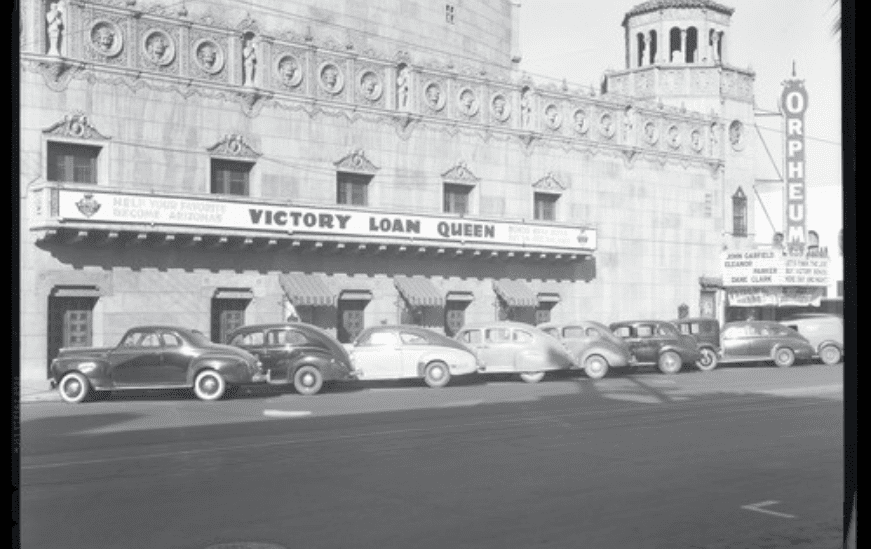
Then: Orpheum Theatre

Now: Phoenix Theatre Outdoor Performances
Downtown Phoenix has become a region dedicated to celebrating the arts. There is something for everyone, from the Broadway-quality productions finding homes in our theaters, to large-scale murals, galleries and award-winning museums like the Phoenix Art Museum, Children’s Museum of Phoenix, Heard Museum, Arizona Science Center and more.
Our arts and culture scene slowly started emerging in the late 1920s with the addition of the Orpheum Theater, which housed some of the earliest shows and events downtown, in 1929. But with the addition of outdoor stages at both Herberger Theater and Phoenix Theatre, hundreds of thousands of arts lovers have found a space to converge in Downtown Phoenix to celebrate and immerse themselves in artistic collections, song, dance and drama.
Elevating art further, Artlink Inc., a nonprofit organization, was born from artists in 1989 to help support the stakeholders of the arts and culture community, amplifying its collective strength. Artlink supports a variety of community-based art events and initiatives, including complimentary shuttles during the monthly First Friday Art Walks, The Artist Forward Fund (TAFF), Phoenix Urban Guide (PUG), the annual Art Detour, Art d’Core Gala and the Juried Exhibition.
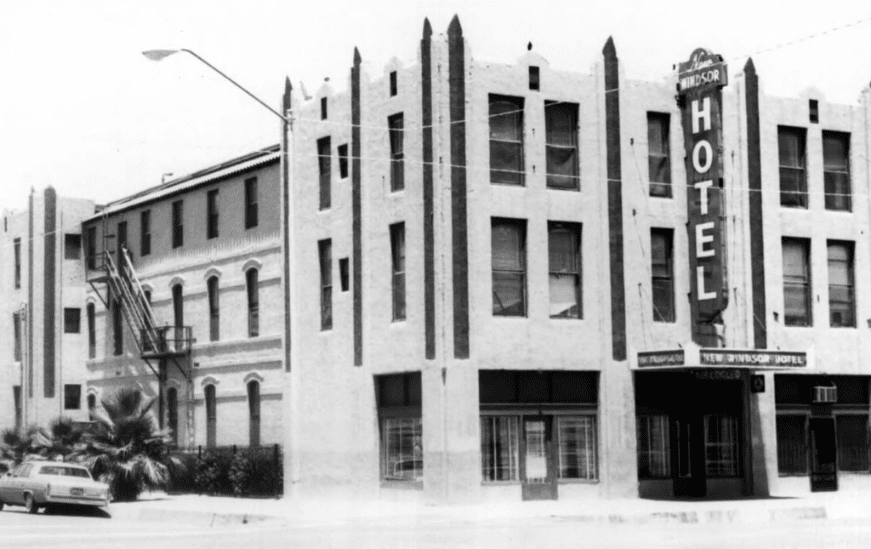
Then: 6th Avenue Hotel
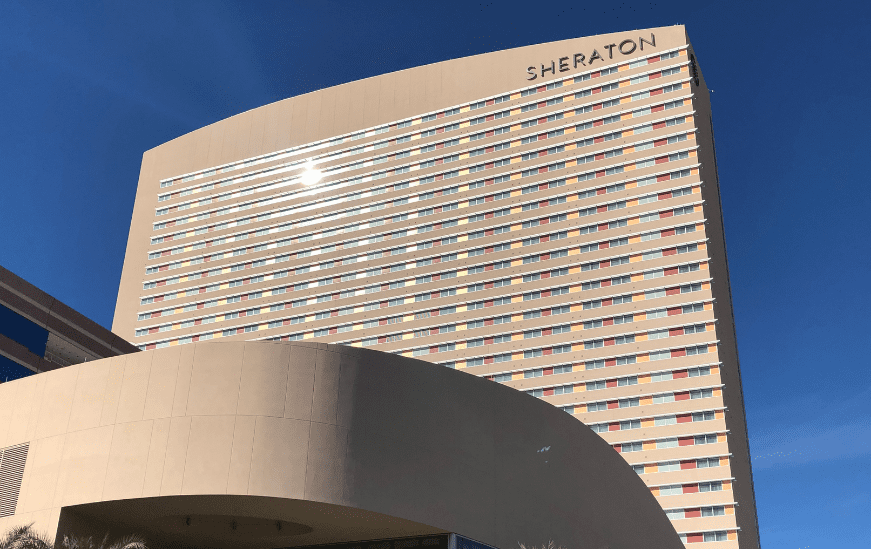
Now: Sheraton Phoenix Downtown
Built in 1893, the 6th Avenue Hotel is one of the only hotels that remain from Phoenix’s original townsite, although you may not recognize it from its initial iteration. It has undergone a couple of name changes and an addition over the years: in 1925 it was renamed the Windsor Hotel, and later, after an addition was added, renamed one last time as the New Windsor Hotel. Its rare style of architecture captures the transition between Victorian style and 1930s Art Deco style.
Today, Downtown Phoenix has shed its past as a thoroughfare, becoming a destination in its own right. With more than 12 hotels in the 1.9-acre space, Downtown has added nearly 2,500 rooms since 2008, with an additional 450 currently under construction – like the newly refreshed Sheraton Phoenix Downtown. Fun Fact: Every high-profile hotel in Downtown Phoenix has undergone or is undergoing a major renovation including the Hyatt Regency Phoenix, Renaissance Phoenix Downtown Hotel and The Westin Phoenix Downtown.
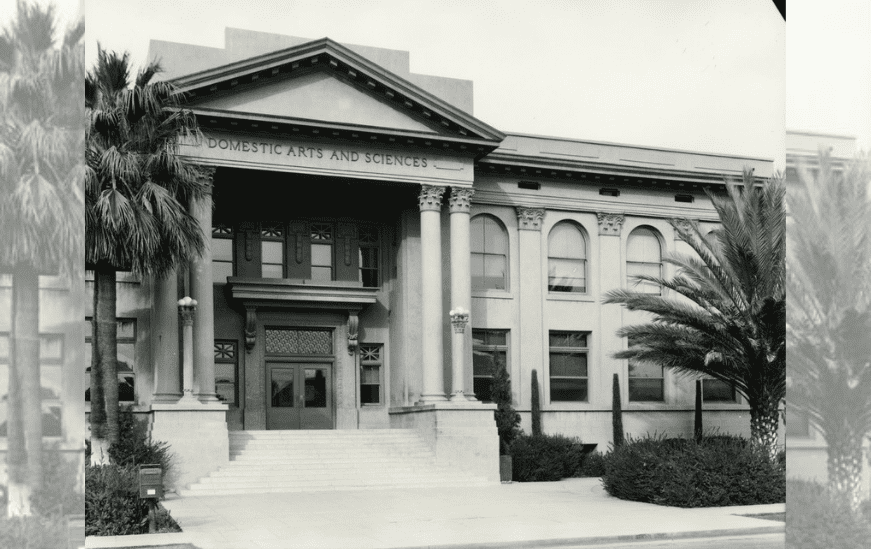
Then: Original Phoenix School
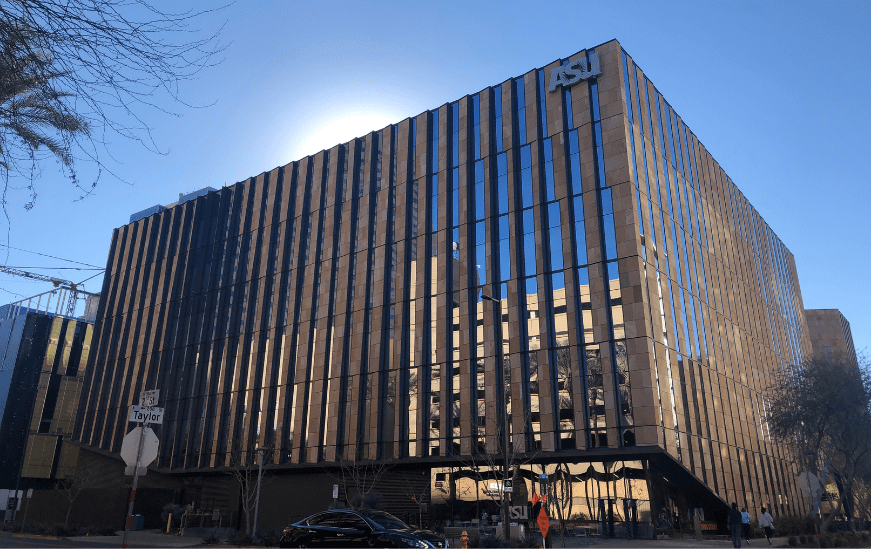
Now: ASU Downtown Campus
Downtown Phoenix has made major strides in education over the years. Initially, our major education-oriented structure was the original Phoenix School in the east end, now known as Phoenix Union School.
Today, Northern Arizona University (NAU), The University of Arizona (UArizona) and Arizona State University (ASU) have put Downtown Phoenix on the map as a major educational center in not just Arizona, but across the Southwest. Their downtown campuses provide a multitude of academic and professional connections for students preparing for careers. In fact, ASU anticipates nearly doubling their downtown student population from 12,000+ to 20,000 with development currently underway, according to the Phoenix Business Journal.
For students, learning takes place in contemporary classrooms and research centers throughout campus buildings integrated into Phoenix’s iconic architecture, incorporating the historic U.S. Post Office building and modern-day landmarks such as the Walter Cronkite School of Journalism and Mass Communication and the Arizona Beus Center for Law and Society.
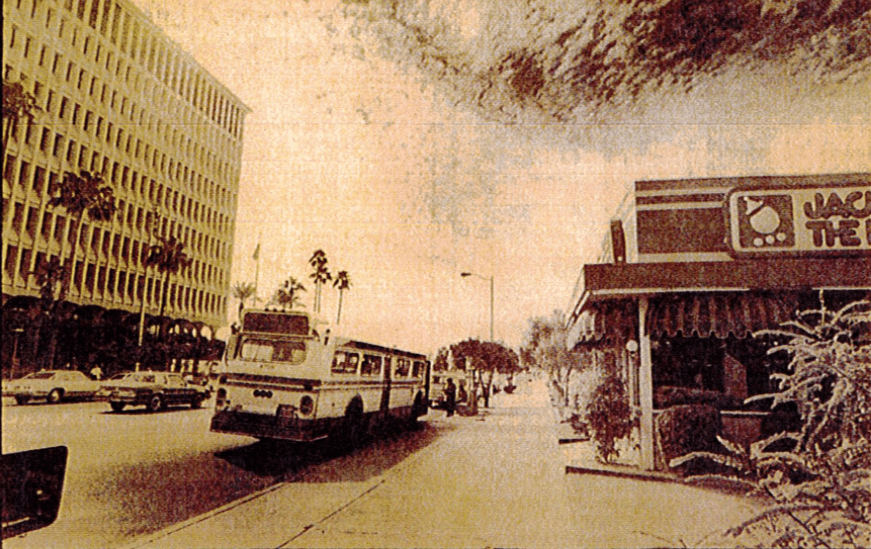
Then: Jack In the Box
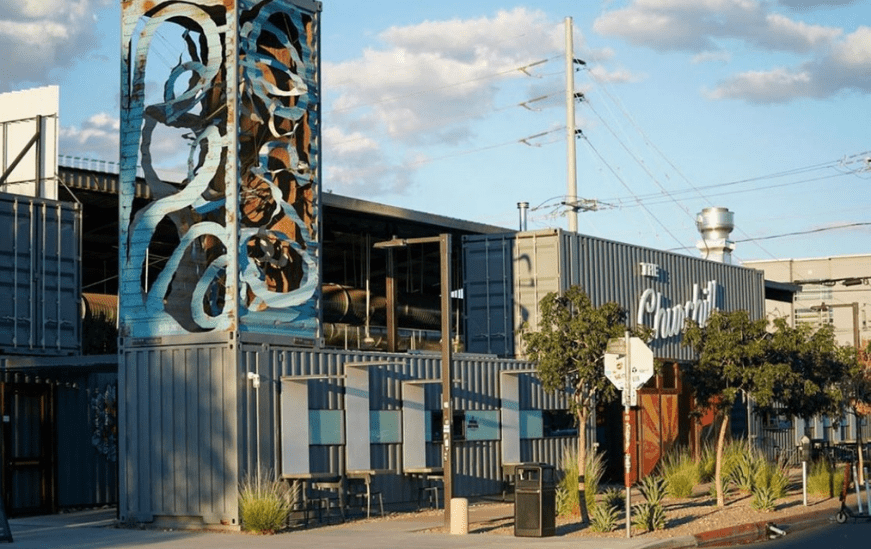
Now: The Churchill
Who would have thought Downtown Phoenix would become such a culinary hotspot? In the early years, we were far from being a foodie’s dream, but things have changed dramatically.
Gone are the days when a downtown employee would have to make sure to grab dinner early because the only restaurant open after 7 pm was the Jack In the Box. Fun Fact: The site where that infamous Jack In the Box once sat is now home to Phoenix City Hall.
Today, Downtown has around 200 bars and restaurants and attracts some of the top chefs and mixologists in the game. In fact, Downtown Phoenix is home to five 2020 James Beard nominees, including Chris Bianco, who operates Pizzeria Bianco at Heritage Square. Despite a pandemic, we’re actually projected to have more restaurants open in Q1 2021 than were open in Q1 2020.
We’re also home to a cutting-edge culinary concept – The Churchill – which is designed to be an incubator and includes 10 small local businesses that all focus their efforts on collaboration over competition and actively find ways to benefit each other. In fact, 85% of restaurants in Downtown Phoenix are locally owned and operated.
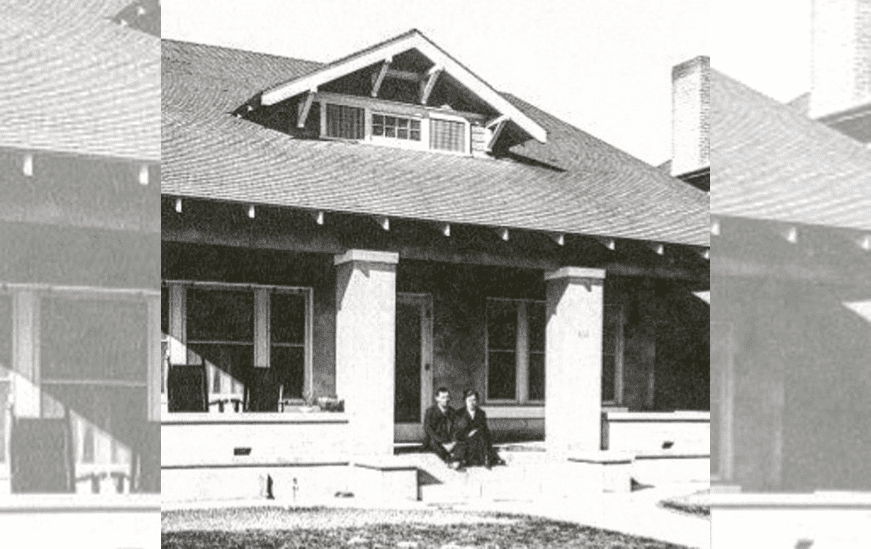
Then: Historic Roosevelt Neighborhood

Now: Vertical Living @ 3rd Street and Roosevelt
When we look at Downtown Phoenix’s residential history, we see an interesting evolution.
Historically, the Roosevelt Neighborhood was the residential hub of Downtown. Today, it thrives as home to First Friday, one of the top art walks in the country, dozens of restaurants and – most noticeably – residential density, holding the distinction of having one of the most densely populated intersections – at Third Street and Roosevelt – in the state.
In the 2000s, we saw some of the first residential towers built in the core of Downtown. When the Great Recession hit, the momentum continued as we showed our resilience with the Downtown population. With over 3,700 residential units currently under construction and another 3,200 in predevelopment, Downtown Phoenix will produce the same number of residential units in the next two to three years as produced over the past 20 years.
Here’s another fun fact to consider: Downtown Phoenix is the only market in the nation that didn’t see a construction downturn during the COVID-19 pandemic, with residential additions of X Phoenix, The Ryan at Block 23, Adeline at Collier Center and Kenect Phoenix on Central.
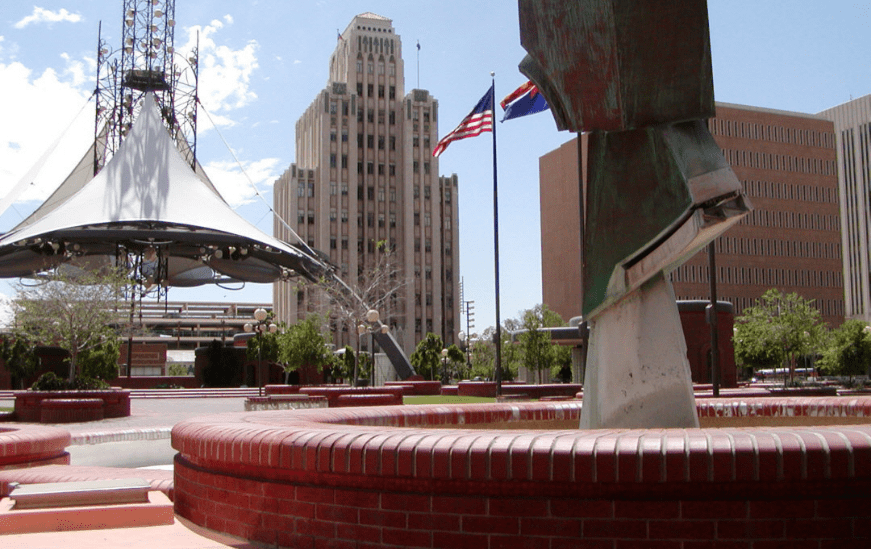
Then: Patriots Square Park

Now: Hance Park
What’s interesting about Downtown Phoenix is that we have an overwhelming amount of greenspace and outdoor parks compared to other metropolitan centers!
The former epicenter of the original Phoenix town site was home to an underused public space called Patriots Park. While there were good intentions in establishing it, the park was sadly often overlooked or outright forgotten, until RED Development stepped up to transform the space into CityScape, which is now a thriving focal point of downtown.
Now, when we look at greenspace, we look at Hance Park, which was intentionally created to bring green into the downtown core after the development of the Deck Park Tunnel, upon which it was built. Today it’s an area with lush greenspace and home to the new Fiesta Bowl PLAY, Japanese Friendship Garden, Irish Cultural Center and the McClelland Irish Library, Phoenix Center for the Arts and Burton Barr Phoenix Central Library.

Then: Luhrs Tower
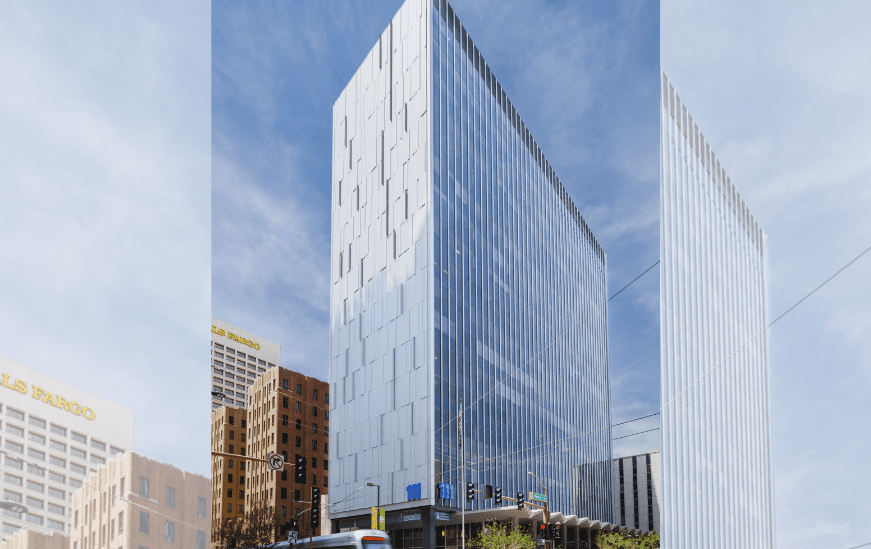
Now: The Monroe
While Downtown Phoenix has always been the financial and civic center of Arizona, we’re quickly becoming the hotbed for innovation and business growth. Established in 1924, the 10-story neoclassical Luhrs Buildings and the 14-story Art Deco Luhrs Tower (1929) housed some of the first office life in our core. Thanks to a decade-long revitalization between Central and First Avenues & Jefferson and Madison Streets, The Luhrs City Center now serves as a multi-use office and retail space.
Today, Downtown Phoenix has more than nine million square feet of private office space in its core and more on the way. The area is home to more than 65,000 employees whose companies have taken advantage of unique spaces in older structures and warehouse buildings. Interestingly, almost every office tower in Downtown Phoenix has been renovated in the past three years!
Demand for Downtown office space continues as employers look to take advantage of the light rail system and provide their employees with an amenity-rich, walkable and collaborative working environment. The Monroe is one of the many popular multi-use office concepts with heavy amenities and notable technology and software tenants.
Among the latest projects to complete in recent years are 200,000 square feet of open-concept space in the Warehouse District, a new high-rise tower at Block 23, and the refurbishment of the former Maricopa County Jail into usable office space.
It’s interesting to note that despite the number of physical offices, a new trend in working has emerged since the Great Recession – coworking or flexible spaces. Currently, there are seven coworking spaces in Downtown Phoenix. The most recently opened location – WeWork – started welcoming guests in January 2020.

Then: Pacific Railway

Now: Valley Metro Light Rail
Rail has been the lifeblood of Downtown Phoenix since its inception, although today’s railways look a little different from 140 years ago. The old Pacific Railway was a vital artery into Downtown Phoenix.
Today, rail has redefined how we get into and out of Downtown Phoenix…and it’s easier than ever, even from opposite sides of the city. The Valley Metro Light Rail has linked the four corners of the Valley to Downtown Phoenix and continues to expand to bring greater accessibility to residents across the greater metropolitan area. In Oct. 2019, construction on a new stretch of 6.5 miles of light rail officially started and is scheduled for 2024 completion. To the tune of $1.35 billion, the new routes will link South Phoenix and the Arizona State Capital Mall to downtown.

